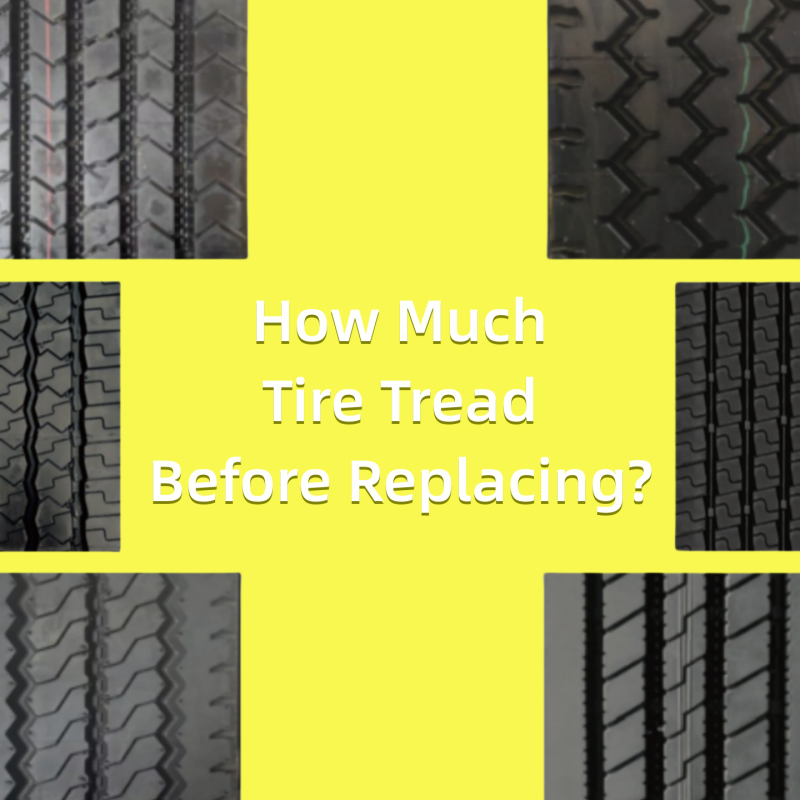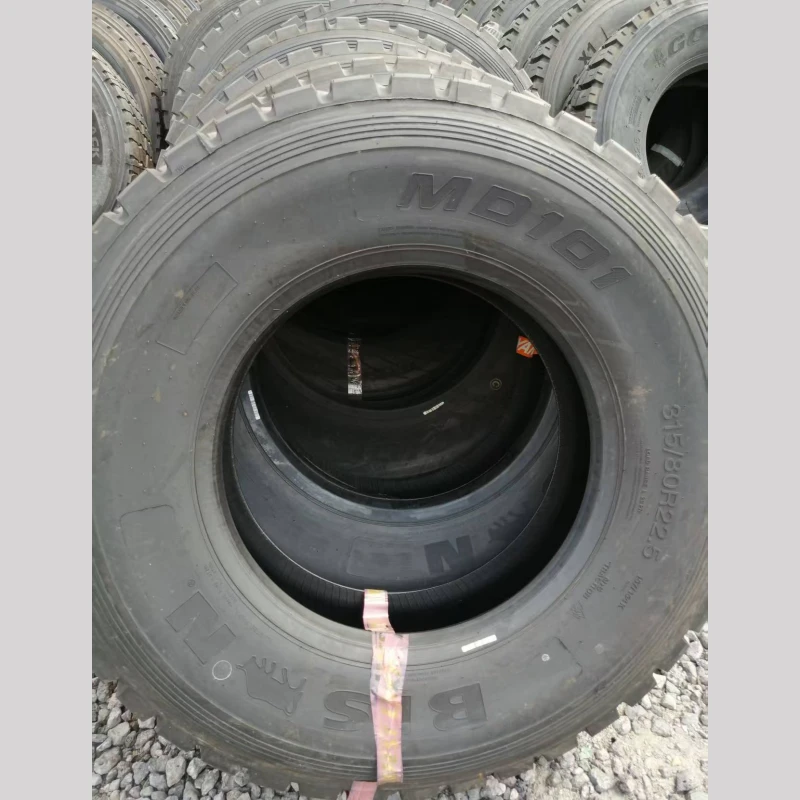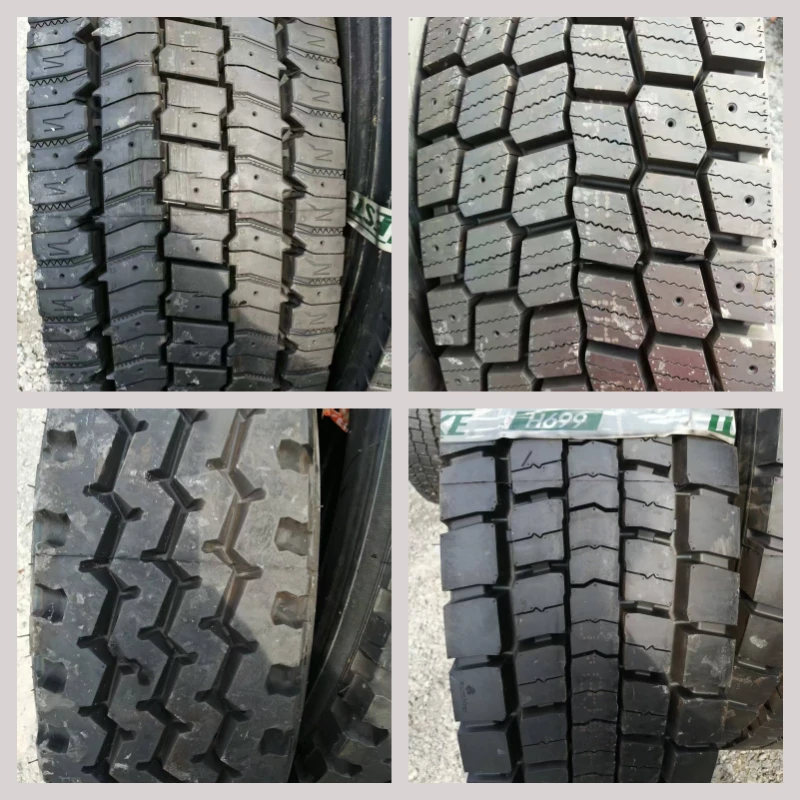Introduction
Tires are the only point of contact between a vehicle and the road, and their condition directly affects safety, performance, and fuel efficiency. One of the most important factors in tire health is tread depth. Drivers often wonder: how much tire tread should remain before replacement is necessary?
According to the U.S. Department of Transportation (DOT), tires are considered legally worn out when the tread depth reaches 2/32 of an inch (1.6 mm). However, many automotive experts, including the National Highway Traffic Safety Administration (NHTSA) and Consumer Reports, recommend replacing tires sooner—usually around 4/32 of an inch (3.2 mm) for wet roads and 5/32 of an inch (4 mm) for snowy conditions.
In this article, we’ll explore tire tread depth in detail, backed by research data and statistics. We will also highlight how Qingdao Royal Mile Co., Ltd., a leading supplier of tire retreading materials and used tires, contributes to safer, more sustainable tire solutions.
Why Tire Tread Depth Matters
Tire tread refers to the rubber patterns that contact the road. As tires wear down, the grooves become shallower, reducing their ability to grip the road, channel water, and maintain stability. Low tread depth significantly increases the risk of hydroplaning, longer braking distances, and tire blowouts.
Key Statistics on Tread and Safety
| Tread Depth (mm) | Equivalent (inches) | Road Condition Safety Impact |
|---|---|---|
| 8 mm (new tire) | 10/32" | Optimal grip and safety. |
| 4 mm | 5/32" | Still safe, but traction reduced on wet roads. |
| 3.2 mm | 4/32" | Recommended minimum for rain. |
| 2 mm | 2/32" | Legal minimum in many countries; unsafe on wet/snowy roads. |
| <2 mm | <2/32" | Dangerous, high risk of accidents. |
Research from the AAA Foundation for Traffic Safety found that stopping distances increased by 43% on wet pavement when tires with 2/32" tread depth were compared to tires with 4/32" tread depth.
Measuring Tire Tread Depth
To determine how much tread you have before replacing your tires, there are three common methods:
Penny Test (U.S. Standard)
Insert a penny into the tread with Lincoln’s head upside down.
If you can see all of Lincoln’s head, the tread depth is below 2/32" and the tire needs replacement.
Tire Tread Gauge
A precise tool that measures in mm or 32nds of an inch.
Recommended for accurate measurement.
Tread Wear Indicators (TWI)
Built-in raised bars inside the grooves.
When tread wears down to the bar’s level, the tire is at 2/32" and must be replaced.
Legal Tread Depth Standards by Region
Different countries enforce different minimum tread depth laws.
| Country/Region | Legal Minimum Tread Depth | Recommended Replacement Depth |
|---|---|---|
| United States | 2/32" (1.6 mm) | 4/32" (3.2 mm) |
| European Union | 1.6 mm | 3 mm |
| United Kingdom | 1.6 mm across ¾ of tread | 3 mm |
| Canada | 1.6 mm | 3-4 mm |
| China | 1.6 mm | 3 mm |
| Japan | 1.6 mm | 3 mm |
This shows that while 1.6 mm is the universal legal minimum, most road safety organizations advise replacing tires well before reaching that point.
How Driving Conditions Affect Tread Replacement
The right time to replace tires also depends on weather, terrain, and driving style.
| Driving Condition | Recommended Minimum Tread Depth |
|---|---|
| Dry pavement | 2/32" (1.6 mm) |
| Wet roads | 4/32" (3.2 mm) |
| Snow/ice | 5-6/32" (4-5 mm) |
| Off-road driving | 6-7/32" (5-6 mm) |
For example, studies by Tire Rack show that tires with less than 4/32" tread depth had significantly reduced stopping ability on wet surfaces, with cars needing up to 90 feet more braking distance at highway speeds.
Cost vs. Safety: Why Early Replacement Is Worth It
Some drivers delay tire replacement to save money, but the hidden costs of driving on worn tires can be far greater.
Data on Accident Risks and Costs
According to the NHTSA, 11,000 tire-related crashes occur in the U.S. annually, many linked to insufficient tread.
A study by Bridgestone found that drivers with tires under 3 mm tread depth were 3 times more likely to be involved in wet-weather accidents.
| Factor | Worn Tires (<2/32") | Safe Tires (>4/32") |
|---|---|---|
| Braking Distance (wet, 60 mph) | ~235 ft | ~165 ft |
| Hydroplaning Risk | High | Low |
| Fuel Efficiency | Reduced | Optimal |
| Accident Probability | 3x higher | Normal |
Thus, while replacing tires earlier may seem costly, it greatly reduces accident risks and long-term expenses.
Tire Retreading: A Cost-Effective and Eco-Friendly Solution
Replacing worn tires with new ones is not the only option. Many fleet operators, businesses, and eco-conscious drivers turn to tire retreading as a sustainable alternative.
What Is Tire Retreading?
Tire retreading involves applying a new layer of rubber tread to the casing of a used tire. This process can extend the life of the tire by up to 50-70%, while maintaining safety and performance when done with high-quality materials.
Benefits of Retreading
| Benefit | Impact |
|---|---|
| Cost Savings | Retreads cost 30-50% less than new tires. |
| Sustainability | Reduces tire waste, supporting global environmental goals. |
| Performance | With quality materials, retreads can perform nearly as well as new tires. |
| Durability | Suitable for commercial fleets, trucks, buses, and off-road vehicles. |
Qingdao Royal Mile Co., Ltd.: Extending Tire Lifespan
When it comes to managing tire tread replacement and sustainability, Qingdao Royal Mile Co., Ltd. is at the forefront of innovation.
Our Business Focus
We specialize in:
Tire retreading raw materials that help extend the life of commercial and passenger tires.
Supplying retreaded, used, and specialty tires including ATV, scooter, military, passenger, truck, and bus tires.
Why Choose Royal Mile?
High-Quality Raw Materials
Our rubber tread strips are designed for superior durability, heat resistance, and adhesion.
Sourced from advanced factories in Shandong, Jiangsu, and Zhejiang.
Cost Efficiency
Up to 40% lower than European suppliers without sacrificing quality.
Sustainability Commitment
By enabling tire retreading, we reduce waste and support circular economy principles.
Global Reach
40% of our products are exported to Asia, Europe, and Africa, with a rapidly expanding global network.
Product Quality and Certifications
ISO 9001 & ISO 14001 certified suppliers.
R&D team developing advanced solutions like the Champion Rubber series.
Professional logistics support to ports worldwide (Shanghai, Busan, Rotterdam).
With these strengths, Qingdao Royal Mile is not only a supplier but a long-term business partner for fleets, workshops, and distributors seeking safe, affordable, and eco-friendly tire solutions. Welcome to contact Qingdao Royal Mile.
Conclusion
So, how much tire tread should remain before replacing? While 2/32" (1.6 mm) is the legal minimum in most regions, real-world safety data shows that replacing at 4/32" (3.2 mm) for wet roads and 5/32" (4 mm) for snow is far safer.
For drivers and fleet managers, the choice comes down to balancing safety, cost, and sustainability. Tire replacement ensures road safety, but tire retreading provides a powerful alternative—reducing costs and environmental impact without sacrificing performance.
At Qingdao Royal Mile Co., Ltd., we provide high-quality retreading raw materials, used tires, and integrated tire recycling solutions that help extend tire lifespan responsibly. Our commitment to innovation, quality, and sustainability ensures that every customer receives products that meet international standards while saving costs and supporting global environmental goals.



